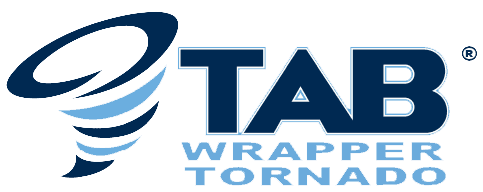The recently enacted One Big Beautiful Bill Act (OBBBA) introduces significant, permanent changes to the U.S. tax code that could influence how manufacturers, warehouse operators, and other businesses approach equipment investments.
This legislation aims to stimulate investment by reducing the tax burden on acquiring new equipment and facilities, whether that means upgrading production lines, enhancing research and development, or installing specialized equipment like automated pallet wrappers. The OBBBA aims to help U.S. businesses modernize operations and expand production capacity, thereby strengthening domestic manufacturing.
Key Tax Breaks For Equipment Investments
The following tax provisions provide valuable relief for businesses looking to invest in equipment:
100% Bonus Depreciation
Previously set to phase down to 40% in 2025, 100% bonus depreciation is now permanently established in U.S. tax policy. This allows businesses to fully deduct the entire cost of qualifying equipment purchases in the same year the asset is placed into service, instead of spreading depreciation over multiple years.
For example, a $200,000 packaging system that would previously be depreciated over seven years can now be fully deducted in year one, providing immediate tax relief instead of $28,571 in annual deductions.
Higher Section 179 Expensing Limit
The OBBBA also doubles the limits for Section 179 expensing, which is designed for smaller businesses and has dollar limits, unlike bonus depreciation, which has no cap. This expansion increases immediate deduction opportunities for qualifying equipment and software.
- Expensing Limit: Increased from $1,250,000 to $2,500,000 annually
- Phase-Down Threshold: Raised from $3,130,000 to $4,000,000
For example, a business spending $1.8 million on equipment can now use Section 179 to expense the full amount immediately, whereas previously they could only expense $1.25 million upfront and would need to use bonus depreciation for the remaining $550,000.
Immediate Deduction for R&D Expenses
The OBBBA also includes the immediate deduction of domestic research and development (R&D) expenses incurred after December 31, 2024. R&D expenses are the costs businesses spend on activities aimed at creating or improving products, workflow processes, or technologies. This includes tasks such as designing prototypes, testing new product materials, developing software, and conducting experiments to improve existing products.
Key changes include:
- Small businesses (making less than $31 million per year on average) can now deduct R&D expenses from earlier years (after December 31, 2021) that they couldn’t deduct before.
- Larger companies (making more than $31 million per year) must spread out their R&D deductions from 2022 to 2024 over two years, starting in 2025. Before this change, bigger companies had to amortize their domestic R&D expenses over five years or more for tax deductions.
What This Means for Businesses Across America
With these permanent tax benefits, the OBBBA may guide how businesses structure their investment strategies in the years ahead. The ability to fully deduct qualifying purchases in the year they are placed into service means businesses can utilize their tax savings sooner than under previous depreciation schedules.
Key benefits include:
- Reduced Cost: The combination of Section 179 limits and 100% bonus depreciation helps lower the net cost of equipment upgrades by allowing immediate tax deductions instead of spreading them over multiple years.
- Accelerated Equipment Upgrades: Improved cash flow from tax credits enables businesses to move faster on automation and equipment upgrades that enhance productivity and competitiveness.
- Long-Term Planning Confidence: Permanent tax breaks allow for longer-term budgeting and capital investment planning without concerns about expiration dates or phased reductions.
Domestic Production Benefits
In addition to the updated tax provisions, working with domestic suppliers offers practical advantages that support long-term success. Choosing domestic suppliers brings advantages that help you keep projects on time, reduce risk, and maintain smooth operations by providing:
- Supply Chain Reliability: Shorter lead times and simplified logistics mean projects are completed faster.
- Local Service & Support: Nearby technicians respond quickly, and U.S.-based parts availability minimizes downtime.
- Regulatory Confidence: Equipment manufactured in the U.S. meets domestic operational and compliance standards, reducing potential headaches.
Bring Efficiency and Savings Together
With the combined tax benefits and operational advantages of domestic equipment, now is the time to optimize your warehouse automation. Our TAB Wrapper Tornado is designed to streamline your workflow, reduce labor costs, and keep production running smoothly.
Contact our team today to learn how you can take the packaging world by storm.

